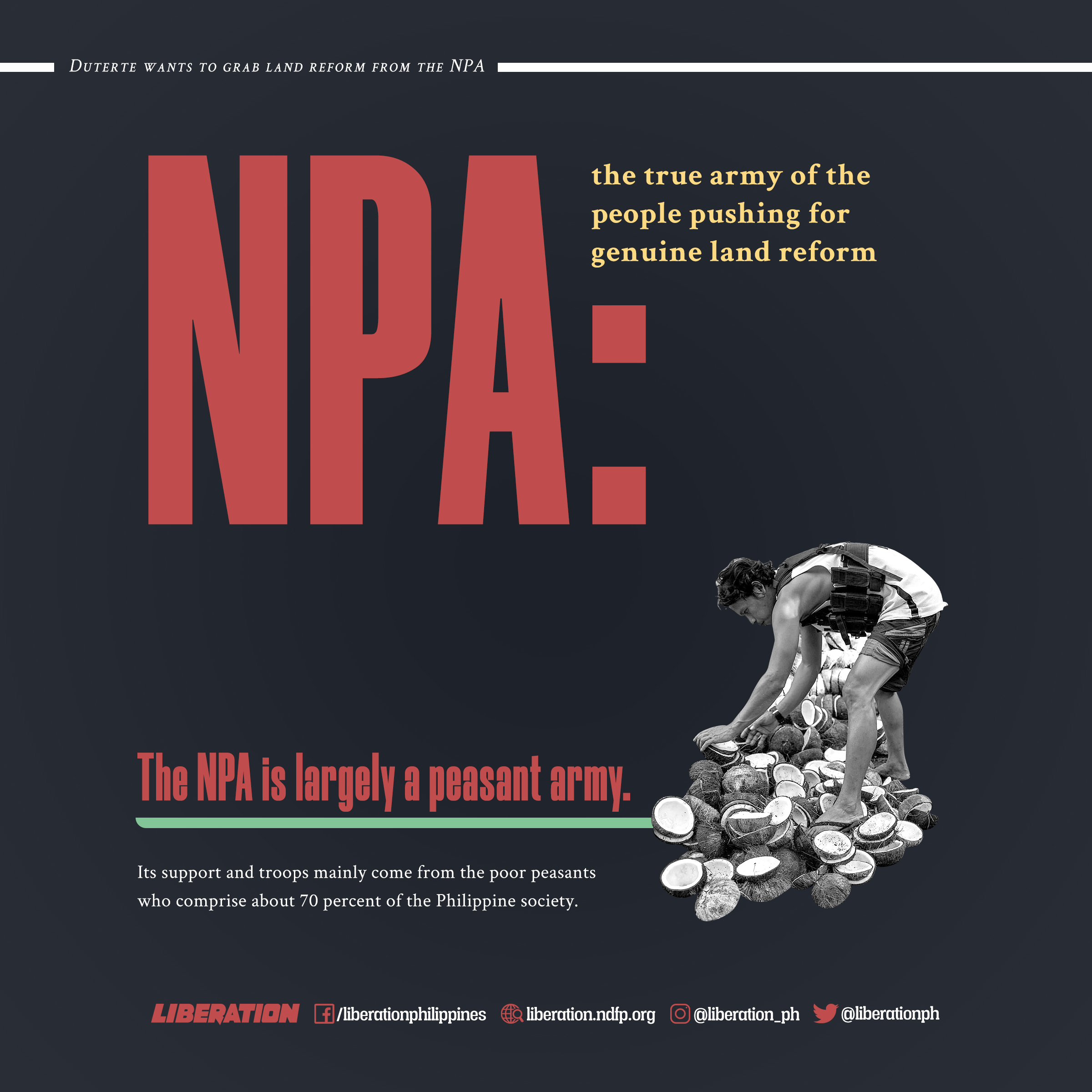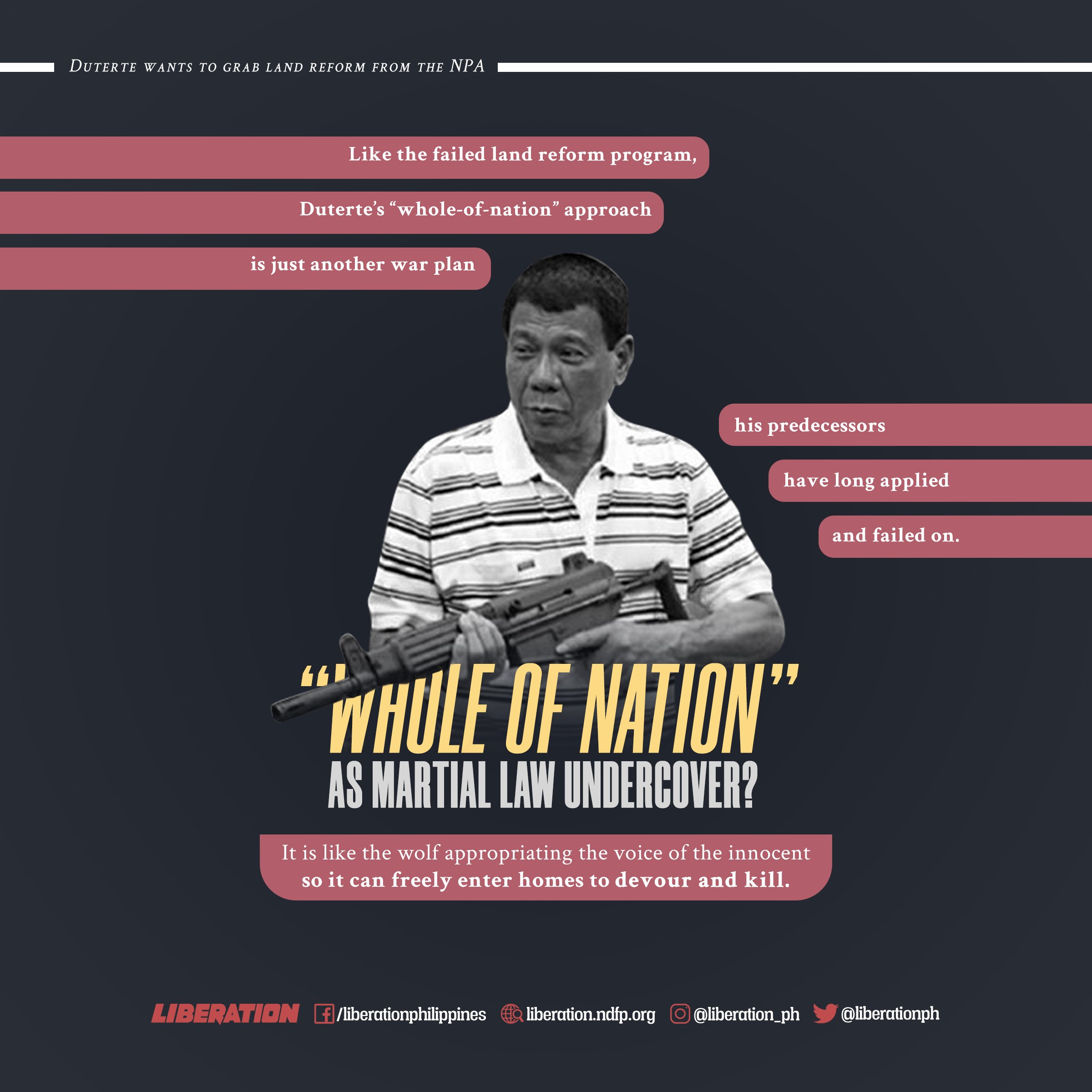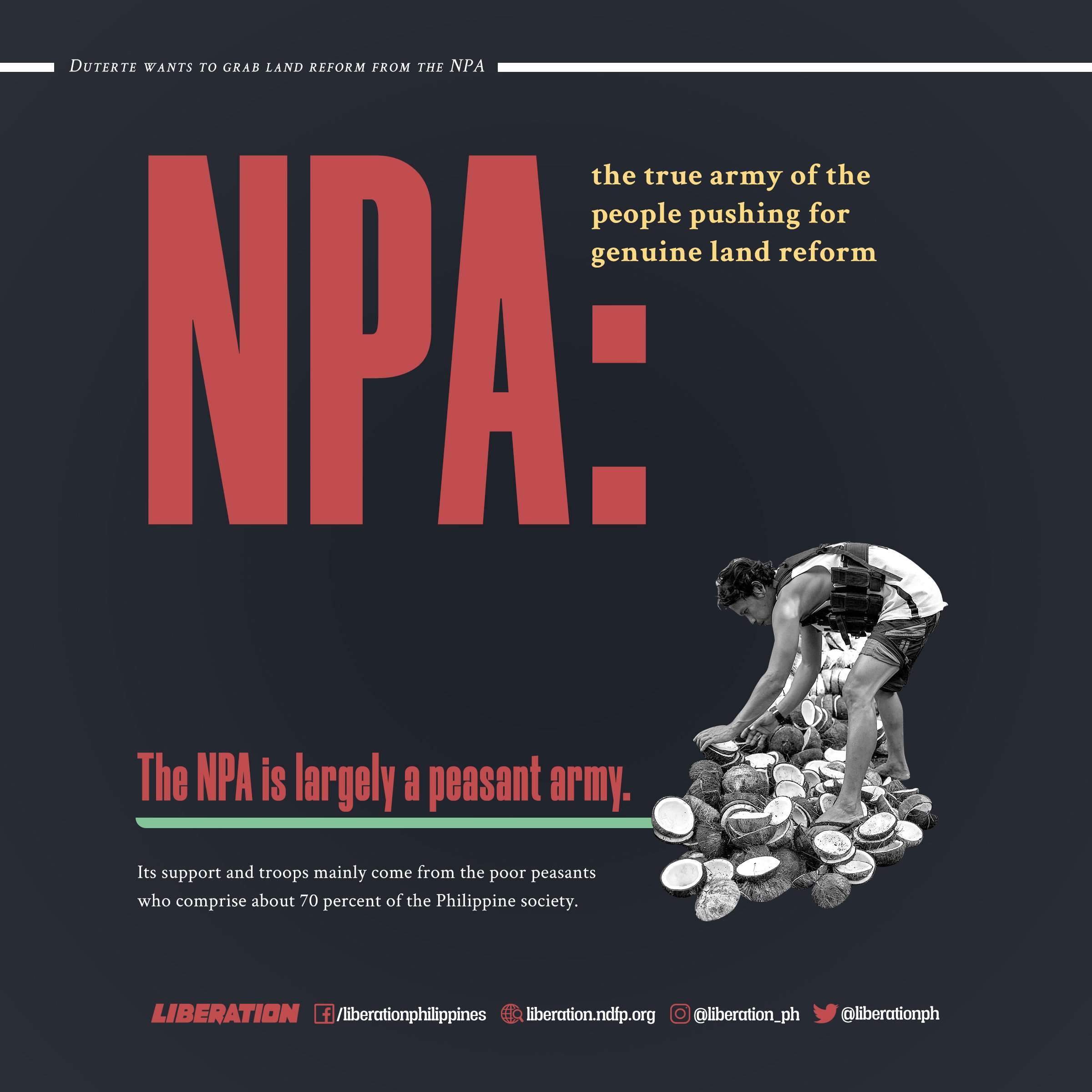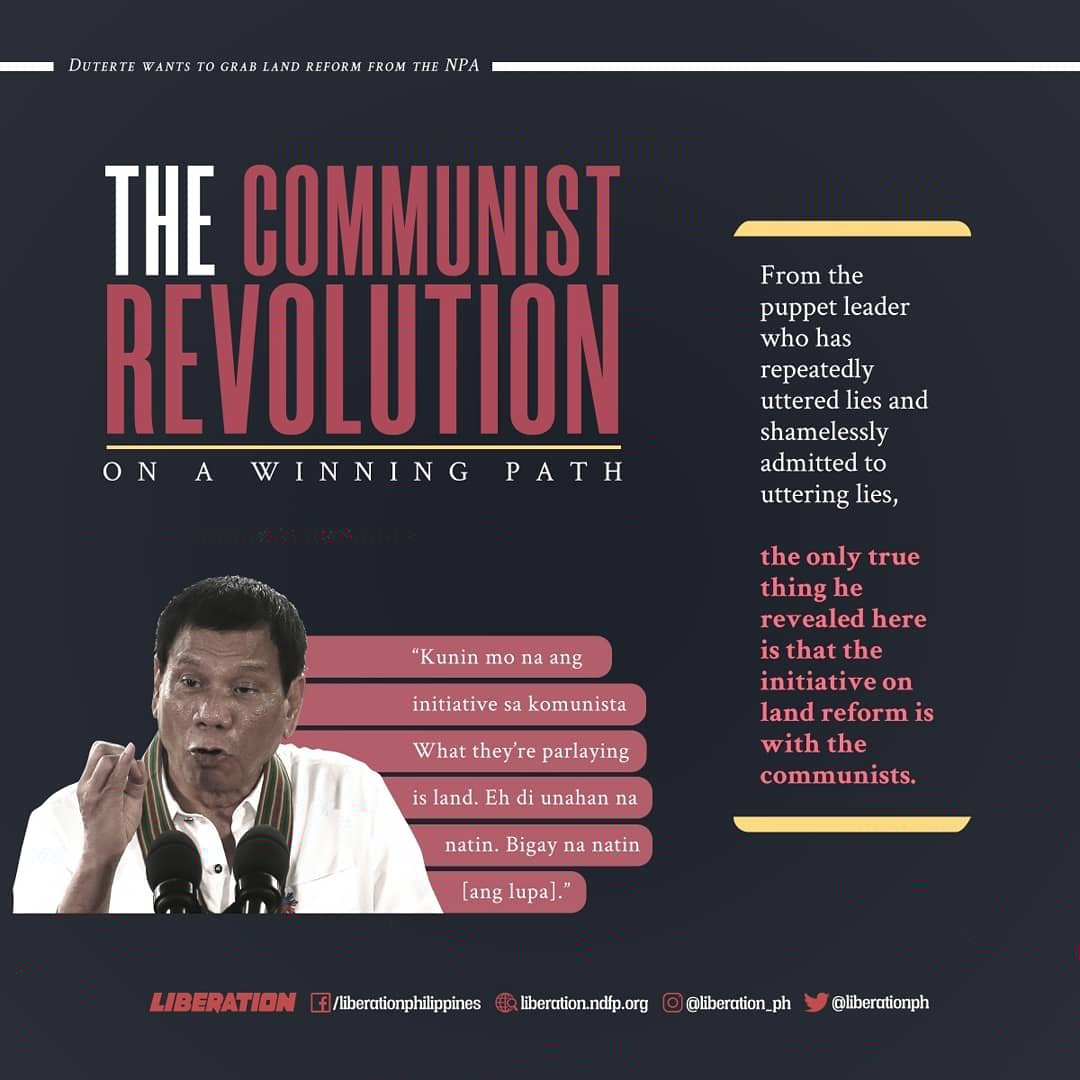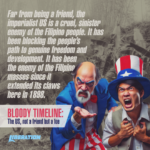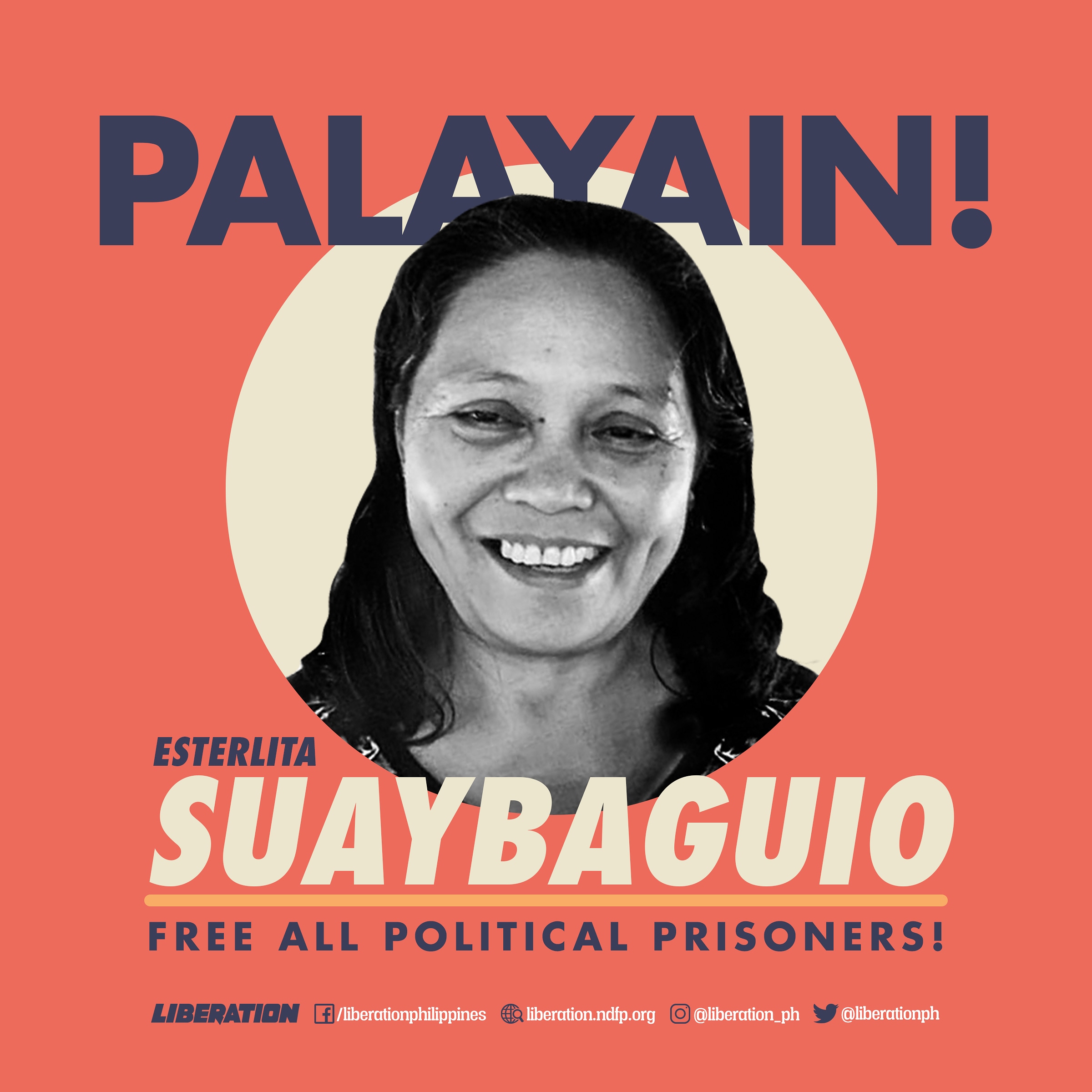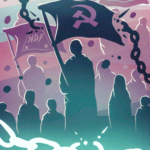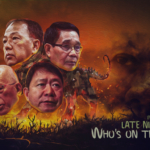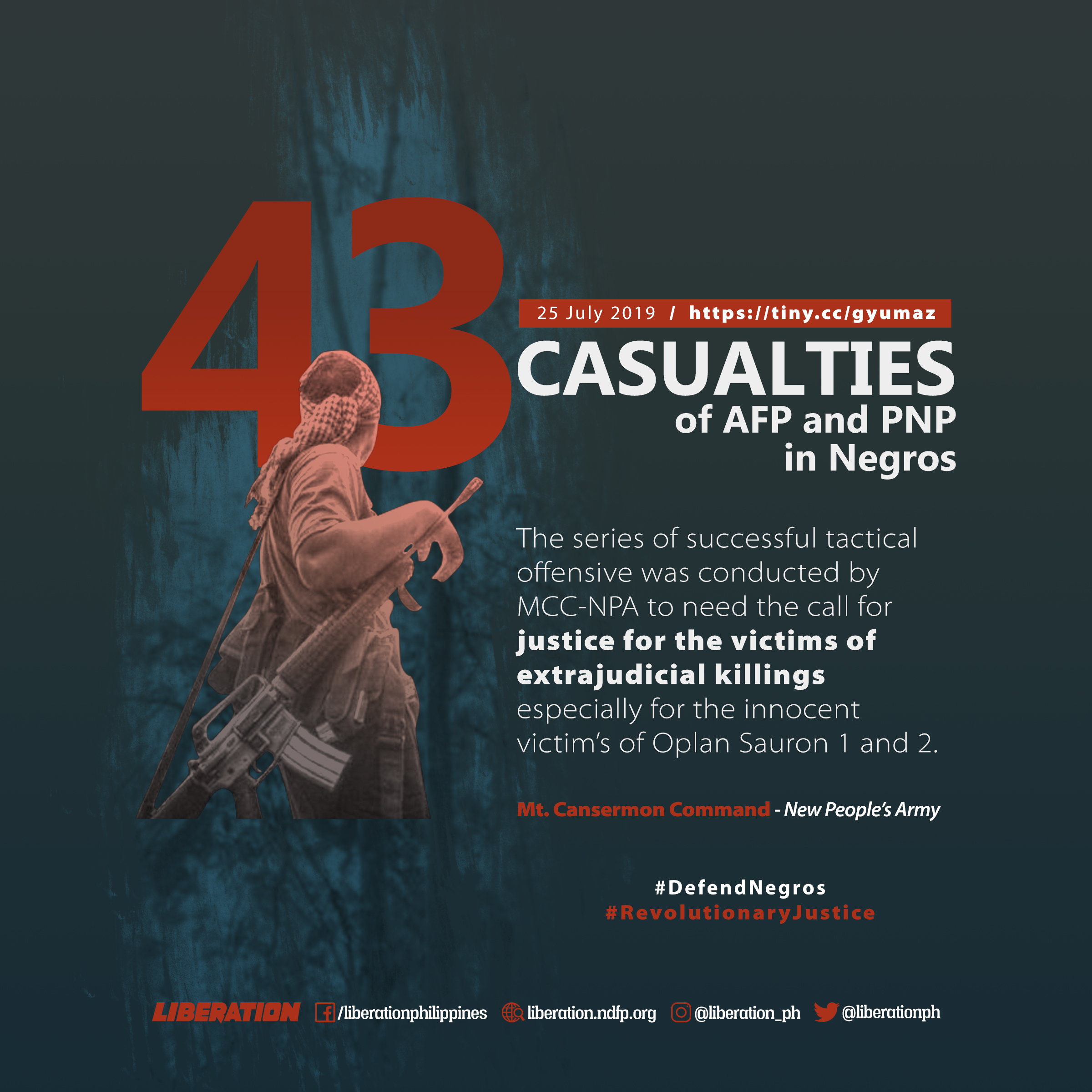Learning from the Masses

by Alexander Dipasupil
The masses are the makers of history. Learn from the masses. Trust and rely on them.
I first encountered these lines when I was a budding activist in the late 1960s. Further readings and study sessions with fellow activists, especially on victorious revolutions, reiterated and highlighted these and impressed it indelibly on my mind. Novel, agitating, and even romantic, it overturned and demolished traditional beliefs and long-held notions on the role of heroes. History, we were taught from grade school to college, is shaped by the ideas of brilliant thinkers and the exploits of extraordinary brave men and women—by heroes as well as by accidents of circumstances, fate, and (in Catholic textbooks) by acts of God.
When we read Prof. Jose Maria Sison’s Struggle for National Democracy (1968) and Philippine Society and Revolution (1970-71) these revolutionary concepts came into sharper focus and assumed a more concrete and recognizable form in the context of Philippine history and the events unfolding around us. Philippine society was then widely described as a “social volcano about to erupt.” It was in deep crises and seething in ferment. The Philippine Revolution, I realized, was no longer “just around the corner.” It was here-and-now.
The revolutionary ‘mass line’ thereby struck closer to our hearts. Like many in my generation of activists, I readily embraced it. From a neat and attractive theoretical abstract, it became a concrete challenge, an urgent call and a fundamental guide to action.
Our first task was to arouse, organize and mobilize the students and other youth in the University and other schools for the national democratic revolution. The efficacy and correctness of the mass line was validated by and demonstrated in the rapid expansion of students’, teachers’ and other sectoral mass organizations, taking off from each one’s specific interests and welfare concerns, linking these to other sectoral and class issues, especially the workers’ and peasants’, and raising these to national issues such as the worsening economic crisis, foreign intervention and the growing fascist repression.
Students and other youth made up the bulk of demonstrators in mass mobilizations and protest actions. We heeded the calls to integrate with workers in the picket lines and strikes, reinforce and join transport strikes against oil price hikes, and support peasants’ and sectoral issues. To the extent we were able to integrate with and learn from the masses, we were able to articulate the people’s aspirations, problems and demands and serve as propagandists for the national democratic revolution.
These culminated in massive protest actions such as the 1970 First Quarter Storm and the February 1971 Diliman Commune. Both advanced the national democratic agenda to the forefront of national attention and discourse as they banned the calls to overthrow imperialism, feudalism, and bureaucrat capitalism in a militant and dramatic manner.
More than being a protest action, the Diliman Commune turned out for me and many youth, professionals and workers, to be an unintended “dry run” or “dress rehearsal” of an organized defensive confrontation with armed state security forces. We barricaded the main campus thoroughfares and buildings in response to an imminent assault by the Constabulary Metropolitan Command (MetroCom) at the height of the oil price hike strikes. We acted swiftly and in an organized manner in setting up a system of defenses (including “anti-aircraft” fireworks positions and self-igniting molotov “bombs”) and logistics. Each “communard” displayed full initiative and remarkable creativity, ingenuity and calmness under real pressure and threat, while acting in coordination with others, as though everything was pre-planned and rehearsed. Engineering and science students promptly commandeered the university radio station (DZUP) increased its transmitting power tenfold and continuously broadcast the national democratic program, the PSR, and appeals for all kinds of support for the Commune.
Significantly, the entire Diliman community—students, faculty, administrative and non-academic personnel and residents—spontaneously and unequivocally rose up as one to resist and condemn the fascist attack and continuing threat. With a couple of hours, our ranks were reinforced by students from other schools, youth from other communities, workers from factories, and transport workers.
We failed and repelled the MetroCom’s repeated attempts from various directions to penetrate and dismantle our barricades. For nine days, we were able to “hold the fort” so to speak, with massive moral, financial and other material support pouring in daily from the public, including from far-flung provinces.
The Diliman Commune experience provided us vivid lessons on the importance—nay, indispensability—of mass support and participation in confronting, frustrating and repelling armed fascist attacks.
The growth and advance of the urban mass movement despite, or especially because of fascist repression encouraged and primed us for waging bigger and higher forms of struggle. Meanwhile, reports of victorious NPA ambushes and raids in the countryside inspired and challenged us further. As the threat of full-blown dictatorship loomed larger, we chanted on the streets: “What is our response to martial law?” “People’s war! People’s war! People’s war!” Internally, within our mass organizations, our paramount slogan was: “All to the Front!”
It was no big surprise then that when Marcos declared martial law in September 1972, thousands of activists, including myself went underground or fled to the countryside to join our workers comrades and peasant masses in waging resistance and people’s war. We abandoned our studies and professional careers, gave up our safe and comfortable lives and future. For me, the heaviest sacrifice then was neither the fear of arrest and detention nor death. It was rather the pain of separating from one’s family and the dreadful prospect of never seeing them again.
The day martial rule was announced, it was through the quick thinking and prompt action of friends and colleagues that I barely escaped arrest and detention. Without regard for their own and their families’ safety, they secretly transported and gave me refuge, from one home or farm to another.

When I had reconnected to the fledging underground, I was assigned tasks that required me to remain for a while in the urban areas, rather than be deployed immediately to the countryside. Though I knew the comrades I would be working with, I was dismayed to learn that most of them believed our security and capacity to perform our assigned task depended primarily on secrecy, compartmentalization, prudence and strict discipline. They were averse to building, broadening, and deepening a support network through mass work. Under martial law conditions, this would be risky and counterproductive, they argued, since we would be unduly exposed to people we could not properly evaluate and screen out and may prove unreliable and untrustworthy.
Concrete practice and reality would soon resolve the question decisively. Successive strings of raids and arrests forced us to repeatedly and hastily abandon our “safe houses” and shift to temporary refuge houses. We had no choice but to meet with and totally entrust our safety to comrades, allies, sympathizers, and various contacts who were hitherto total strangers. Their only “credentials” were their being referred to us (and vise-versa) as part of the underground revolutionary machinery or network. They in turn unquestioningly and without hesitation brought us and welcomed us into their homes (mostly lower petty bourgeois and urban poor) and other facilities in their network. We were as much strangers to them as they were to us. Resistance to fascist rule was the minimum ground for establishing mutual trust and cooperation. While trust was reciprocal, the risks and consequences were not. We activists in the underground could move out or shift to a safe location at the first sign of imminent danger. Our trusting hosts could not and would have had to face and suffer the dire consequences.
Thus the question was settled. Martial law conditions in fact made move imperative the building, expansion, and deepening of an underground mass support network. As our forces and network grew and advanced steadily, so did our capacity to perform our tasks improve and with greater security.

My years in the urban underground impressed on me further the need to trust the masses, rely on them, and learn from them. Survival, and our capacity to perform our tasks, depended largely and primarily on them.
Stronger, the countryside beckoned. What lessons and truths are to be learned from and with the peasant masses, especially in waging the highest form of struggle? It was not without some romanticism that I yearned for and looked forward to life and struggle with the peasant masses in the countryside.
When at long last I stepped into a guerrilla zone in the mid 1970s, I was greeted by group of red fighters and peasants huddled together sitting on their haunches in a semi-circle. The peasants looked me over from head to foot with knowing smiles, some shaking their heads, some nodding slowly.
“We can tell from your smooth complexion you are either a student or a young professional. You have the feet of a prince,” one of the peasants said after I had shaken their hands and introductions made.
I figured they were exaggerating or speaking metaphorically, and merely smiled and nodded back to acknowledge.
“You have a lot to learn about life here in the countryside,” chimed in another peasant.
Indeed, that was an understatement, and I had to learn the hard way for the most part. Thus the romanticism quickly wore off as I experienced the rigors and hardships of a still small and poorly-armed NPA propaganda team. (I was issued a homemade or imitation .22 caliber revolver commonly called paltik with five bullets with dents on their primers, indicating these had misfired previously). We had to constantly avoid enemy patrols, be alert to enemy informers and bad elements, and occasionally had to seek temporary refuge in a “physical base” inside the forest. But for most part, we enjoyed the warm and enthusiastic support of the masses, who served as our “eyes and ears” and welcomed us in their homes while they sought our assistance and advice on practically all problems they had.
Throughout, our peasant comrades in the militia, the peasant organizations, and the red fighters were my constant mentors. Nearly every aspect—not the least survival—of guerrilla life depended on the support of the peasant masses and their direct practical know-how: from distinguishing between edible and toxic fruits, leaves and barks in the forest, building makeshift shelters, planting and growing rice and other crops, forecasting weather to gathering information on enemy movements and improving weapons.
But it would be a decade later when I would encounter first-hand the political sharpness of a peasant revolutionary.
February 1986. I was with an NPA undersized company on its way to rendezvous with two other platoons at a staging area for a major tactical offensive. Our excitement, anticipation, and morale grew with each step toward the objective. It was amplified further with news over our transistor radios on the “People Power” uprising unfolding at EDSA.
Then came the announcement that Marcos had fled Malacañang with his family and all the loot they could carry. The hated fascist dictatorship had fallen! The people were victorious!
Euphoria soon died down with subsequent news reports and commentaries that with the Cory Aquino government taking over, democracy would be restored and peace will soon reign over the country. A ceasefire is in the works, leading to the disbandment of the NPA and other armed groups fighting the Marcos regime.
Not a few red fighter asked if these reports were true. Before reaching the next sitio and barrio center, Ka Erning, the company CO (commanding officer) convened the entire company for a political meeting.
“News reports and commentaries that the revolution and civil war are over are false. The reactionary state is intact; the ruling class remains in power. There has only been a change in which faction of the ruling class holds the reins of power. The NPA, led by the Party, shall continue to wage people’s war until the victory of the national democratic revolution,” Ka Mando, the Political Officer, explained. “It is important that we also make this clear to the people in the next sitio and barrio center we are approaching,” he added.
True enough as we reached the outskirts of the sitio, we were met by the barrio people led by the local militia, waving at us with more than the usual eagerness and excitement. We greeted them back, shook their hands and unslung our rifles, signifying we would stop over a half hour or so. Before we could utter another word, Ka Elias, the head of the militia asked, “Comrade, is it true, what we heard over the radio, that the revolution is over and that you comrades will all be going down to the poblacion (town center) and then home to your families?”
“No, those reports are not true,” Ka Erning replied.
There was a collective sigh of relief from the militia and other peasants gathered around us.
“Absolutely not true,” Ka Mando added. “But why do you ask?”
“Because if it’s true,” Ka Elias replied, “our only request is that you leave your weapons with us so that we can continue to fight and carry on the revolution. Because we do not believe our lives will change and improve now that Marcos has been overthrown and Cory will be the new President. Does she not herself come from one of the biggest landlord families?”
At this, one of the red fighters shouted, “Mabuhay ang Rebolusyon! (Long live the revolution!)”
The peasants raised their clenched fists and we raised our rifles as we all responded, “Mabuhay ang Rebolusyon!”
There was no need for any further explanations.

Six years later, and in a different region, another incident impressed upon me how much we of petty bourgeois origin, especially intellectuals, tend to underestimate both the political wisdom and revolutionary tenacity of the peasant masses.
The Party leadership had launched the Second Great Rectification Movement (SGRM) to address serious ideological, political, organizational, and military errors that had resulted in the loss of up to 40% of the revolutionary mass base nationwide.
I was with an undersized NPA squad with a couple of Party cadres passing through what is called a “recovery area”—a cluster of barrios once part of a consolidated guerrilla zone. Intense enemy pressure, coupled with weaknesses in Party leadership and the People’s Army’s mass organizing work led to the dissolution of local Party committees and mass organizations. The Party leadership and the NPA unit were forced to shift their area of operation.
It was late afternoon in January 1993. As we approached a group of peasants, we could sense mixed feelings in their facial expressions and body language. It was the first time in two or three years they were seeing armed red fighters out in the open. There was pleasant surprise, a trace of eagerness, and a hint of apprehension. Certainly, no sign of hostility.
As we shook hands with them, Ka Caloy, our team leader explained, “The entire Party and People’s Army has been undertaking a rectification movement, more comprehensive and thoroughgoing than our usual criticism-self-criticism sessions you and I have been accustomed to.”
Ka Caloy gave a broad outline of the major errors summed up in the SGRM, and started to cite concrete examples that local Party, People’s Army, and mass organizations had experienced or were familiar with.
Before he could proceed to a lengthier discussion, Ka Ruel, one of the local peasant leaders interrupted, “You have nothing to worry in so far as our commitment to the revolution is concerned. The Party is like a blacksmith forging and shaping a plough blade or a bolo. We the peasants are the iron and steel—the raw materials for the revolution. If, sometimes, the blacksmith would lose his focus or aim, goes cross-eyed or has poor eyesight, he would hit the iron or steel improperly or miss it entirely. But if he realizes his error and corrects his aim and strike, then the iron and steel can still be forged properly into a sharp and sturdy tool or weapon. We the peasant masses will always be here with and for the revolution. It is only the in the revolution and through it that we and our succeeding generations shall have a bright future.”
Fifty years have passed since I first read the lines. The masses are the makers of history. Learn from the masses. Trust and rely on them. I look forward to learning more from the masses and making history with them. ###

#ServeThePeople
—–
VISIT and FOLLOW
Website: https://liberation.ndfp.info
Facebook: https://fb.com/liberationphilippines
Twitter: https://twitter.com/liberationph
Instagram: https://instagram.com/liberation_ph




